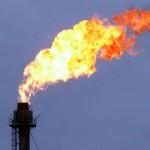 Natural gas fell for a third straight session on Monday as weather forecasts called for the likelihood of frigid air late this week to remain mostly contained within Canada, selling off previous expectations for Arctic blasts to hit large parts of the US.
Natural gas fell for a third straight session on Monday as weather forecasts called for the likelihood of frigid air late this week to remain mostly contained within Canada, selling off previous expectations for Arctic blasts to hit large parts of the US.
Natural gas for delivery in February slid 4.19% to $2.996 per million British thermal units by 9:32 GMT, having shifted in a daily range of $3.045-$2.975.
NatGasWeather.com reported in a Sunday update that the eastern and northern US will continue to experience seasonally cold readings for the most of the week, while a weather system over Texas and the Southeast brings rain and cold air around Wednesday.
Cold winter blasts will be hitting the regions every few days through the end of the month, but more importantly, the coldest Arctic air over Canada will remain contained, with brief blasts hitting only the upper Great Lakes and interior Northeast through January 28th.
NatGasWeather.com reported that many central and eastern US regions will see stronger heating demand, but with the Arctic air failing to push deep in the US, temperatures will be overall seasonal for late January. Cold blasts will persist through the end of the month, with the potential of Arctic air being tapped in the first week of February, but the outlook remains unclear.
“There is still potential for frigid Arctic air to arrive after January 28th, NatGasWeather.com said. “But the data would also need to trend further south with the core of the cold pool if its going to affect other regions of the US other than portions of the Great Lakes and Northeast.”
Temperatures
According to AccuWeather.com, readings in New York will range between 25 and 35 degrees on January 21st, compared to the average 27-38, and will remain close to normal levels through January 28th. Chicago will enjoy mostly seasonal weather through January 26th, with readings on January 22nd set to range between 22 and 33 degrees Fahrenheit, compared to the average 18-31.
Down South, temperatures in Houston will max out at 72 degrees on January 20th, 9 above normal, but will then retreat to remain slightly below the average 45-63 through January 27th. On the West Coast, Los Angeles will be warmer than usual for the remaining portion of the month, with readings set to range between 54 and 76 degrees on January 23rd, compared to the average 48-68.
Supplies
The Energy Information Administration reported on Thursday that US natural gas inventories declined by 236 billion cubic feet in the week ended January 9th, compared to analysts’ projections for a decrease in the range of 220-230 bcf. The drop exceeded the five-year average draw of 190 bcf, while inventories slid by 268 bcf a year earlier.
Total gas held in US storage hubs amounted to 2.853 trillion cubic feet, expanding a deficit to the five-year average inventories of 2.966 trillion to 3.8% from 2.1% during the previous week, or 113 bcf. The surplus to the year-ago stockpiles level of 2.571 trillion cubic feet expanded to 11.0%.
This week’s report is also projected to show an above-average weekly decline as the recent Arctic blasts are factored in. The EIA will likely report a withdrawal of more than 200 billion cubic feet, compared to the five-year average of -176 bcf and the 133-bcf drop during the comparable week a year earlier. However, the following one should be much thinner due to seasonal conditions this week.
Pivot points
According to Binary Tribune’s daily analysis, February natural gas futures’ central pivot point stands at $3.126. In case the contract penetrates the first resistance level at $3.229 per million British thermal units, it will encounter next resistance $3.330. If breached, upside movement may attempt to advance to $3.433 per mBtu.
If the energy source drops below its first support level at $3.025 per mBtu, it will next see support at $2.922. If the second key support zone is breached, the power-station fuel’s downward movement may extend to $2.821 per mBtu.
In weekly terms, the central pivot point is at $3.087. The three key resistance levels are as follows: R1 – $3.392, R2 – $3.656, R3 – $3.961. The three key support levels are: S1 – $2.823, S2 – $2.518, S3 – $2.254.





